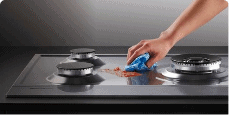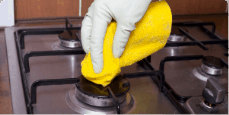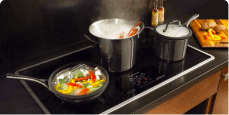Iron is one of the common household necessities that help you wear wrinkle-free, crisp and fresh-looking clothes anytime. An ideal iron should be easier to use, heat up quickly and have electronic controls to adjust the heat according to fabric variety.
But with countless options to choose from, you may be clueless where to begin. To help you, we have crafted an ultimate guide that ensures you pick the right one for your requirements.
4 Important factors you need to know to make a perfect buying decision
Factor 1. Choose the right type of iron
Having the right type of iron makes it effortless and easy to get rid of wrinkles. Basically, there are mainly two different types of irons that include steam iron and dry iron. Each one has its own set of features, benefits and drawbacks. So, choosing the one suitable for your requirements is very important. The below brief explanation will help you decide.
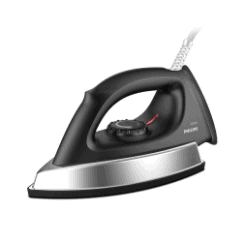
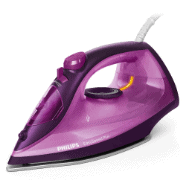
Steam irons are also recommended for people who iron clothes frequently. Using the latest features and customized settings, you can iron almost all types of fabrics.
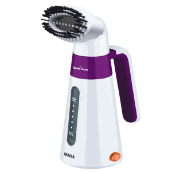
Garment steamers are suitable for ironing delicate fabrics like sarees, business suits, dupattas, lehengas, dresses, ruffles and similar that are difficult to iron using a regular one. Using steam, they can iron stubborn wrinkles easily without the need of ironing surfaces. Being travel-friendly, you can carry them around easily. If you want more information on garment steamers, you can find it here.
Factor 2. Choose the wattage for your usage
While purchasing an iron, it is important to analyze the wattage as it represents the operation capability of the iron. To keep it short, irons with higher wattage will heat up quickly. So, you don’t have to spend a lot of time waiting for the iron to heat up. It will also be capable of removing the wrinkles fast compared to irons with lesser wattage. However, before making the choice analyze whether you are in need of higher wattage or not. If you are confused, check out the illustration below to make the choice.
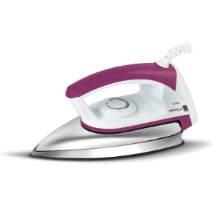
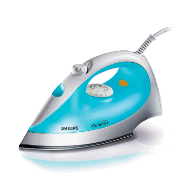
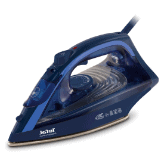
Once you have analyzed the requirements, choose the wattage accordingly. However, remember that irons with higher wattage are usually expensive.
Factor 3. Built Quality & Sole Plate Material
Sole plat is one of the main components of the iron as it is responsible for providing heat to provide a wrinkle-free look. An ideal sole plate will smoothly glide over any type of fabric without any hassle. When it comes to the sole plate of a steam iron, it has tiny holes in order to release the steam.
Be it conventional or latest iron, common materials used for the sole plate include aluminum, non-stick, ceramic and stainless steel. Apart from that, sole plates also have a coating which protects your fabric from sticking to the hot iron. Some of the common non-stick coatings seen in an iron include Teflon, golden Teflon, PTFE and others. To help you analyze which materials are suitable for you, we have provided detailed differentiation below.
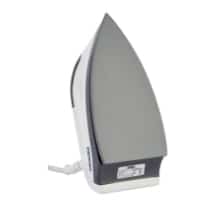
They are the most affordable option. However, they tend to stick to the clothes and lead to burns as well.
• Good conductor of heat
• can stick to clothes
• No Steam option
• Getting outdated
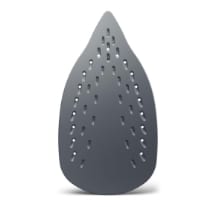
Non-stick sole plate in dry iron has aluminum and metal plate which ensures smooth ironing.
• Even distribution of heat
• Easy to use & Move
• does not cause stain
• Coating Degrades with time
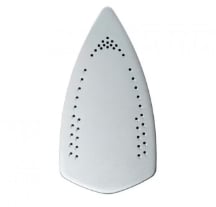
They usually come with coating on metal or aluminum plates which ensures smooth gliding and ironing.
• Even distribution of heat
• Good conductor of heat
• Remove creases perfectly
• gets peel with time
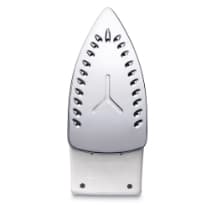
Irons with stainless steel sole plates are more efficient. However, there are few models present in India.
• Good conductor of heat
• heats up quickly
• Scratch resistive
• Powerful steam spray
Factor 4. Other Features To look For
Apart from the factors mentioned above, there are other additional factors that provide insights on other aspects of an iron. We have mentioned them below for your reference.
1. Make your choice: Cordless vs Corded Steam Iron
The answer to this question depends on the individual needs. To help you out analyze, we have provided differentiation below.

As the name suggests, it doesn’t have any cord so you have greater freedom of movement, making it easy to iron. However, it has poor heat retention and there are limited options in Indian market.
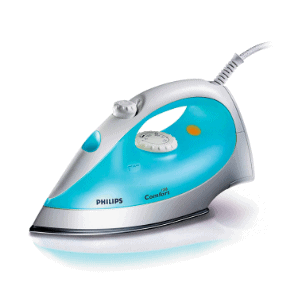
They have better ironing capability so you can continuously iron the clothes without worrying about pausing to charge up. However, the cord gets in the way sometimes while ironing.
If you want to iron continuously with adequate heat or if you want perfect steam iron, then you have to choose a corded model.
However, if you are going to iron just formal shirts and pants, then even a cordless model would be adequate enough. Because, you place them on the charging dock while repositioning the clothes. For ironing curtains, sheets, jeans or any other heavy fabrics, then you have to choose a corded model as it provides continuous heat.
In summary, you have to choose among them based on the personal preference or ironing requirements.
2. Temperature Controls
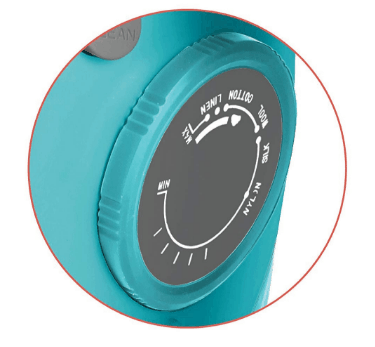
The temperate settings present on the iron will let you control the heat based on the need or fabric you are going to iron. Traditional irons don’t have variable temperature settings which makes it difficult to iron delicate fabrics and the risk of burning is also high. So, it is better to invest in a model that comes with variable temperature controls. Usually, the temperature variation is mentioned in degrees, type of fabric or just stages.
Most of the brands provide temperature controls for steam irons as well. They also come with additional variable settings for controlling steam output. The range varies from mild continuous to strong bust. Mild range is suitable for overall ironing while strong burst is suitable for tough creases or ironing particular areas. So, check out for these settings before making the purchase.
3. Weight & Built Quality
Weight and build quality play a vital role in terms of ironing experience. An ideal weight is considered too light to lift easily and also provide adequate pressure to iron the clothes. 1kg is usually considered as the ideal weight.
Some of the latest irons are designed to be light in weight, which is surely an advantage. But you may have to put additional pressure on it to iron it properly. So, make sure to check that before making the purchase. Apart from the weight, check the build quality of the iron. Make sure the other components or parts are of high quality to ensure longer life. We recommend choosing a model with sturdy plastic build, aerodynamic design, good grip handle and easy to dial settings.
4. Steam Flow
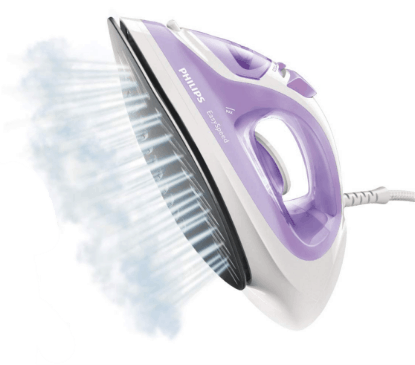
You have to consider this factor, if you are purchasing a steam iron. It helps you analyze the efficiency of the steam.
It disperses a blast of steam to remove the stubborn wrinkles. It is suitable for ironing linen, denim and similar fabrics.
2. Steam Gauge or Adjustable Steam
This lets you adjust the steam according to the requirements. An anti-drip feature is also provided in order to prevent leaks while using steam at lower temperatures.
It is better to invest in a model with a transparent water tank as it lets you know the water levels. It is also better to have water level marking on the reservoir.
This will clear any accumulated limescale or mineral deposits. However, it may not clean the vents. So, you have to use burst-of-steam to clear up the vents.
5. Safety Features
As it is an appliance dealing with electricity and high temperatures, safety is an important feature to consider before making the purchase. Below are some of the safety features you check in an iron.
1. Shock Proof Body
Make sure the body of the iron comes with a shock-proof body to prevent any unexpected accidents and injuries.
2. Drip-Stop feature to prevent leakage
Water leaks in a steam iron can lead to electric shocks. This feature prevents any leaks from the water tank.
3. Auto Shut-Off for No-Burns
Most of the irons come with this feature. It will turn off automatically when the iron is motionless for some time or when the soleplate reaches a certain temperature. This will prevent scorched or burned fabric.
6. Check for Most Trusted Brands in India






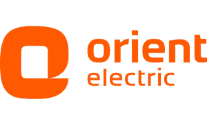


Useful Articles related to Irons
